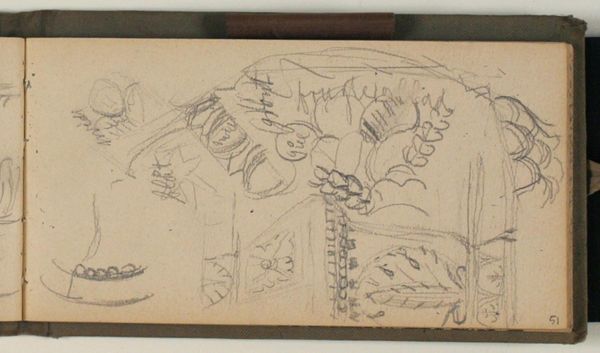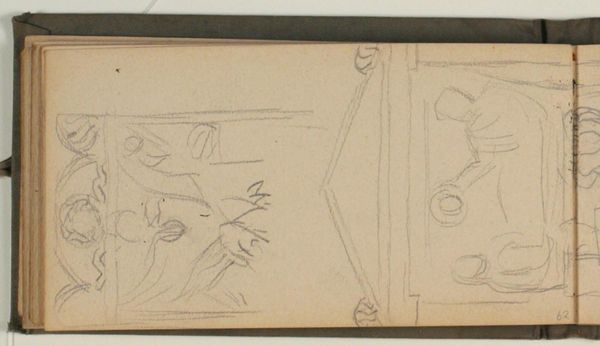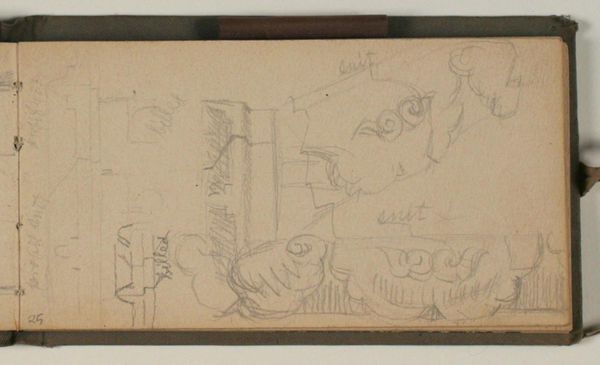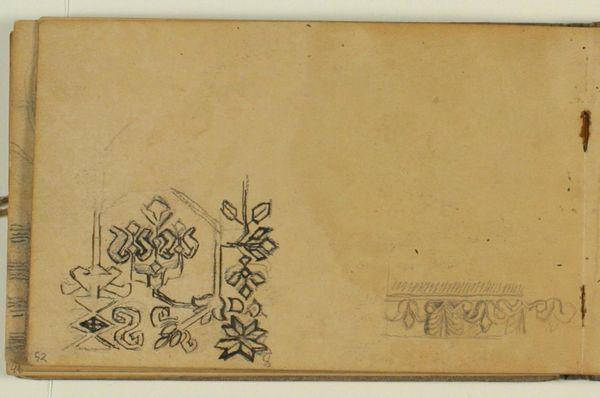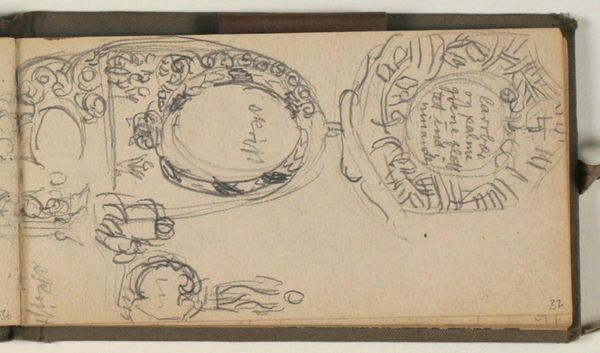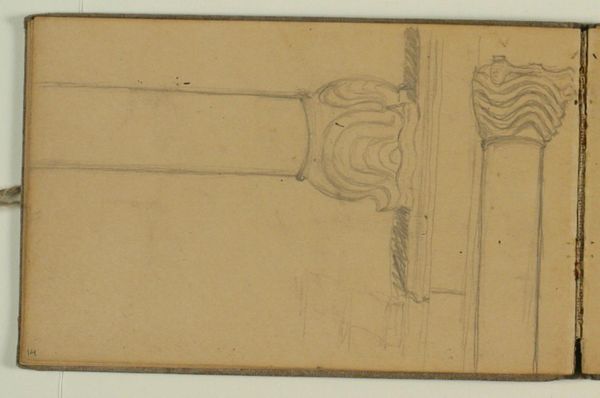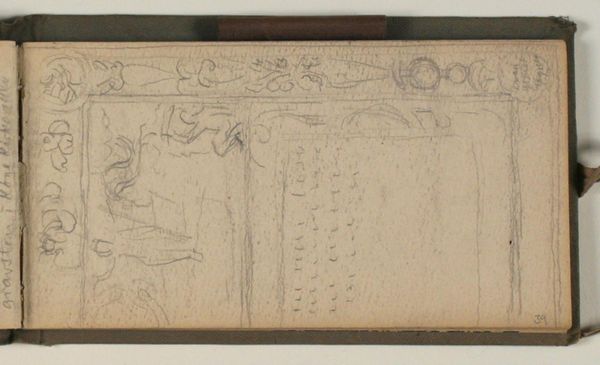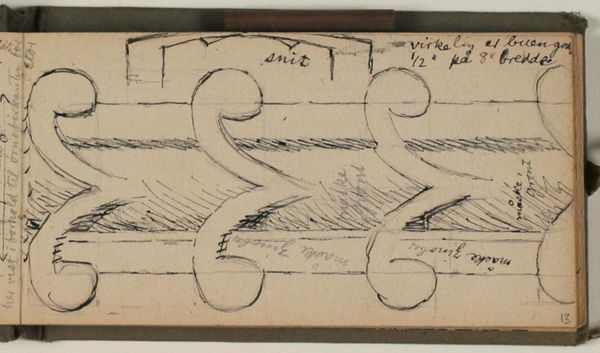
drawing, paper, pencil
#
drawing
#
aged paper
#
toned paper
#
sketch book
#
paper
#
personal sketchbook
#
coloured pencil
#
geometric
#
pencil
#
sketchbook drawing
#
watercolour bleed
#
watercolour illustration
#
sketchbook art
#
watercolor
Dimensions: 92 mm (height) x 174 mm (width) (bladmaal)
Editor: This is Niels Larsen Stevns’ “Studies of Ornaments, and notes” from 1919. It’s a drawing using pencil on paper, part of a sketchbook page. There is an immediate sense of academic curiosity and classical reference, which seems incredibly intentional given the stark difference to today’s social climate. How would you interpret that juxtaposition in terms of the history of art? Curator: That's a keen observation! The artist clearly signals a connection to the artistic traditions of the past, specifically referencing Egyptian and Greek ornamentation, at a time when the world was recovering from a brutal war, the aftershock of the Russian Revolution, and was embracing rapid technological and social changes. What do you think that deliberate reaching back signifies? Editor: Perhaps a desire for order and stability amidst chaos? Maybe even a critique of modernity by drawing attention to perceived timeless aesthetic principles? Curator: Exactly! And remember, art production and art education were being formalized and professionalized during this period. By studying and copying historical styles, artists like Stevns were participating in and legitimizing academic traditions. Do you notice how these sketches aren’t merely copies, but explorations? The use of “studies” in the title may give a glimpse into the process, that in part validates this function in museums today. Editor: I do. So it’s not just about the ornaments themselves, but the act of studying and incorporating them into a personal visual vocabulary that's connected to these greater institutions? Curator: Precisely. And think about who gets to decide what constitutes “good” ornamentation, worthy of study. What sociopolitical forces might be at play in choosing classical, Western traditions? These are ideas worth asking ourselves when engaging with art as a public. Editor: I hadn't considered how much the very act of selecting these historical references encodes certain power structures within the art world. Thanks! Curator: Of course. It is important to continue looking at works such as these, in their historical context, as time evolves around it and us, too.
Comments
No comments
Be the first to comment and join the conversation on the ultimate creative platform.

